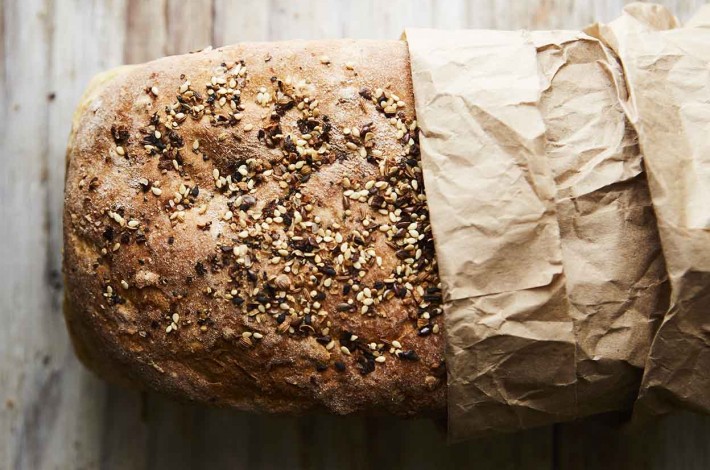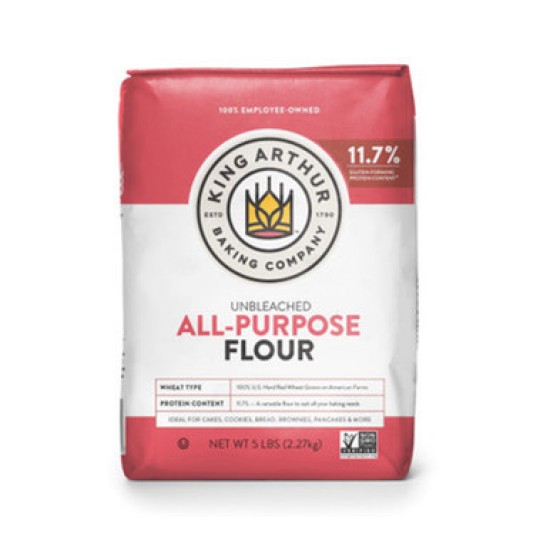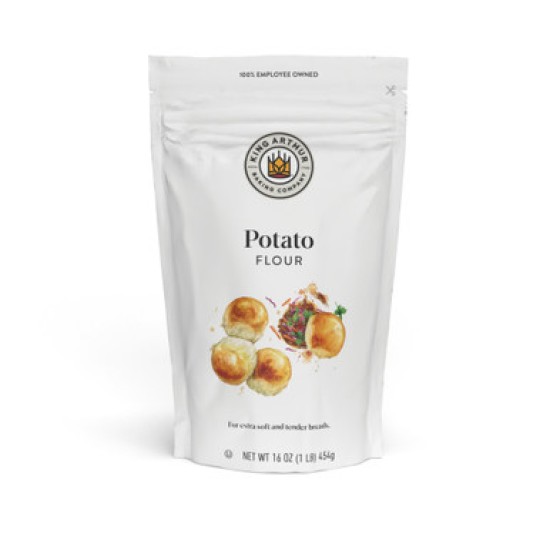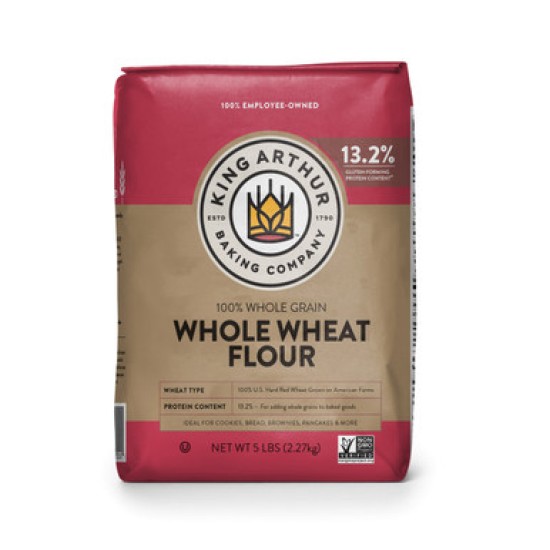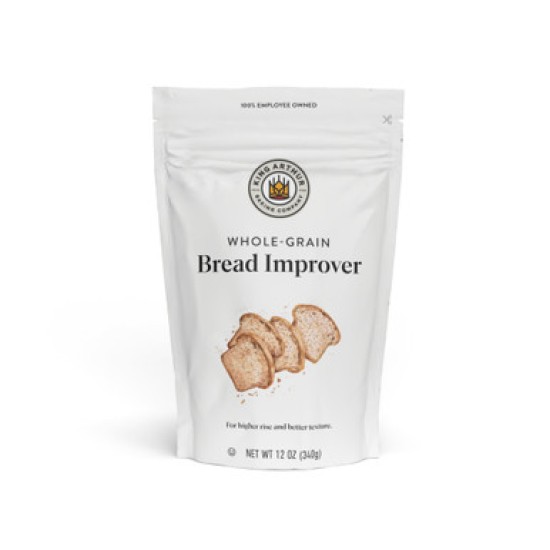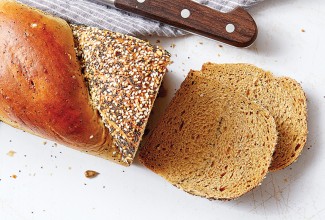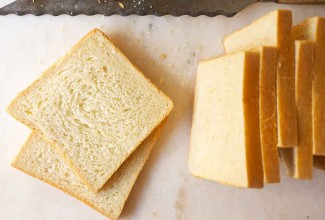-
Weigh your flour; or measure it by gently spooning it into a cup, then sweeping off any excess.
-
Combine all of the ingredients — in a bowl, the bowl of an electric mixer, or the pan of your bread machine — and mix and knead to form a smooth dough. The dough may start out shaggy, then become stickier as you knead; if you use a stand mixer, by the end of a 7-minute knead it'll be sticking heavily to the sides of the bowl. That's OK; if you can scrape it off the sides of the bowl and it feels firm enough to hold its shape, and doesn't stick to your floured or oiled hands, it's fine.
-
Cover the dough, and allow it to rise for 1 1/2 to 2 hours; it'll become puffy, though it may not double in bulk.
-
Lightly grease an 8 1/2" x 4 1/2" bread pan. Gently deflate the risen dough, and shape it into a log. Place it in the pan, cover it lightly, and allow it to rise until it crests at least 1" over the rim of the pan, 1 1/2 to 2 hours. The bread doesn't have much oven-spring (i.e., it won't rise much once it's in the oven), so be sure to let it rise fully before baking. A loaf risen 1" over the rim of the pan will be denser and more close-grained; letting it rise higher will give you a "spongier," lighter bread. Towards the end of the rising time, preheat the oven to 350°F.
-
Bake the bread for 30 to 35 minutes, tenting it with foil after 20 minutes if it's as brown as you like it. When it's done, the bread will be golden brown, and will register 190°F on an instant-read thermometer inserted into the center.
-
Remove the bread from the oven, and turn it out of the pan onto a rack, to cool completely.
